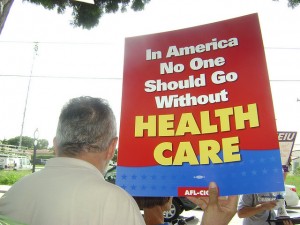Uninsured and Health Care
Jan 12th, 2011
Under the new health care reform, there are many new changes that will soon be introduced to the mass public for their consumption. One of the more prominent changes will occur with the Medicaid program, which is governed through the federal government for those individuals who fall at or below the standard poverty statistics.
One of the new changes to the health care reform deals with the new eligibility rules that are being put into place. The eligibility for refundable premium tax credits is to help low wage earners purchase affordable health insurance. This will occur through the new health insurance exchanges that will be developed over the next few years.
Another possibility the federal government is researching is the possibility for advanceable premium tax credits with the same idea in mind to help low wage earners purchase low cost health insurance through the soon to be developed health insurance exchanges crossing state lines.
The health exchanges will be an arrangement with neighboring states to aid individuals with the purchasing of the best possible health insurance policy they can afford in order for the average monthly cost for health insurance to fit into all household budgets. Is it possible that the federal government is focused too much on the cost of a health insurance policy instead of focusing on the quality of health care each individual will receive? The restructuring of the newly developed tax credits will work as follows.
1. Earners at 133% of the federal poverty level will have health insurance policies capped at two percent of annual income, with the remainder subsidized by tax credits issued by the same federal government
2. Earners between 133% and 150% of the federal poverty level will have health insurance policies capped at three to four percent of annual income, with the remainder subsidized by tax credits issued by the same federal government
3. Earners between 150% and 200% of the federal poverty level will have health insurance policies capped between four percent and 6.3% of annual income, with the remainder subsidized by tax credits issued by the same federal government
4. Earners between 200% and 250% of the federal poverty level will have health insurance policies capped between 6.3% and 8.5% of annual income, with the remainder subsidized by tax credits issued by the same federal government
5. Earners between 250% and 300% of the federal poverty level will have health insurance policies capped between 8.5% and 9.5% of annual income, with the remainder subsidized by tax credits issued by the same federal government
Related posts from our blog:
No related posts.
Tags: health care | health care reform | health care reform changes | health exchanges | Medicaid | News
